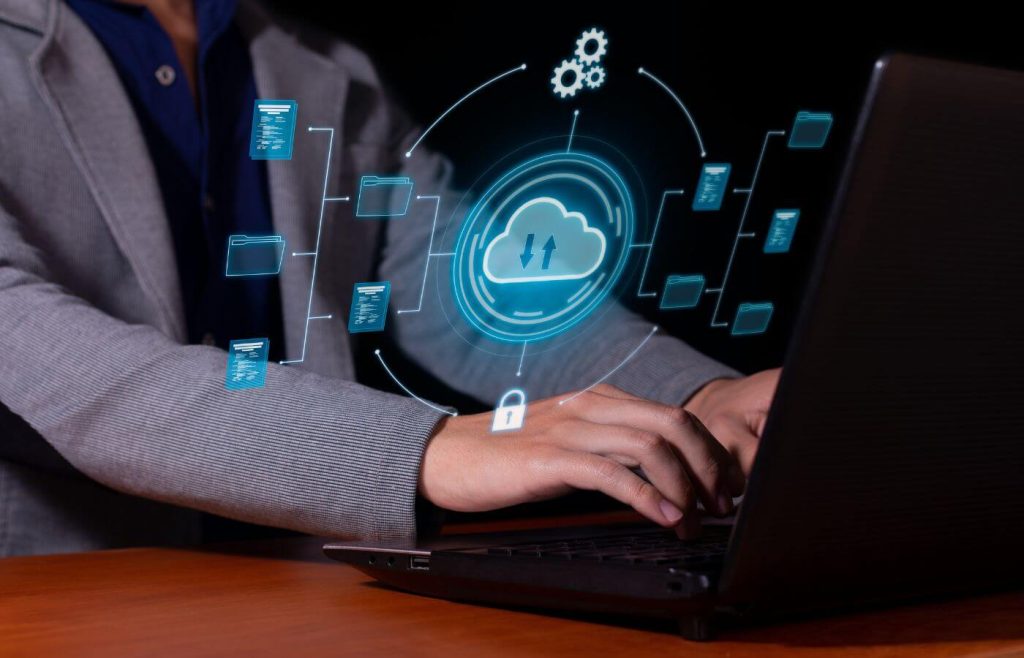As the digital landscape evolves, so do the threats that target it. Cybersecurity has become a dynamic field requiring constant vigilance and adaptation. Businesses, especially those relying heavily on digital infrastructure, must stay ahead of emerging threats to protect their assets and maintain trust. Here, we delve into the future of cybersecurity, highlighting key threats and strategies to mitigate them effectively.
Emerging Cybersecurity Threats
1. Ransomware Evolution
Ransomware attacks have become increasingly sophisticated. These attacks encrypt critical data, demanding ransom for its release. The evolution involves not just encrypting files but also exfiltrating data, threatening to release sensitive information publicly if the ransom isn’t paid. This double extortion tactic amplifies the damage, making it imperative for businesses to enhance their defenses.
- Double Extortion: Attackers not only encrypt data but also steal it, threatening to release it if the ransom isn’t paid.
- Targeted Attacks: High-profile targets, such as large corporations and government entities, are increasingly at risk.
- Ransomware-as-a-Service: Cybercriminals offer ransomware tools for a fee, broadening the scope of potential attackers.
2. Phishing Attacks
Phishing remains a prevalent threat, evolving in its methods. Attackers craft highly personalized messages that appear legitimate, tricking recipients into divulging sensitive information. With advancements in machine learning and AI, phishing schemes are becoming harder to detect. It’s crucial for businesses to train employees to recognize and report suspicious emails.
- Spear Phishing: Targeted attacks on specific individuals within an organization.
- Clone Phishing: Duplication of legitimate emails to trick recipients into providing sensitive information.
- Vishing and Smishing: Phishing attacks through voice calls and SMS messages.
3. Supply Chain Attacks
Supply chain attacks exploit vulnerabilities in third-party vendors. Attackers infiltrate a supplier’s systems to compromise their clients. This method can cause widespread damage as businesses often overlook the security measures of their vendors. Ensuring that third-party vendors adhere to strict cybersecurity standards is essential.
- Vendor Risk Management: Regularly assess the security practices of all third-party vendors.
- Access Controls: Limit the access third-party vendors have to your network.
- Incident Response Plans: Develop and maintain response plans specifically for supply chain attacks.
4. IoT Vulnerabilities
The proliferation of Internet of Things (IoT) devices has expanded the attack surface. Many IoT devices lack robust security features, making them easy targets. These devices, once compromised, can serve as entry points into larger networks, causing significant disruptions.
- Device Authentication: Ensure that all IoT devices have strong authentication mechanisms.
- Network Segmentation: Isolate IoT devices on separate networks to limit the impact of a breach.
- Firmware Updates: Regularly update the firmware on all IoT devices to patch known vulnerabilities.
5. Cloud Security Risks
While cloud services offer scalability and flexibility, they also introduce new security challenges. Misconfigured cloud settings can expose sensitive data, and unauthorized access can lead to data breaches. Businesses must implement stringent access controls and regularly audit their cloud configurations.
- Access Management: Use multi-factor authentication (MFA) and role-based access controls (RBAC).
- Configuration Management: Regularly review and update cloud configurations to ensure compliance with security best practices.
- Data Encryption: Encrypt data at rest and in transit to protect it from unauthorized access.
Staying Ahead: Strategies for Businesses
1. Adopt a Proactive Cybersecurity Posture
Reactive measures are no longer sufficient. Businesses need to adopt a proactive approach to cybersecurity. This includes continuous monitoring for threats, regular penetration testing, and vulnerability assessments. Utilizing Managed IT services for all your IT needs can provide the expertise and resources necessary to maintain a robust security posture.
- Continuous Monitoring: Implement systems that monitor network activity 24/7.
- Penetration Testing: Conduct regular tests to identify and fix vulnerabilities.
- Vulnerability Management: Keep software and systems updated to protect against known vulnerabilities.
2. Employee Training and Awareness
Employees are often the first line of defense against cyber threats. Regular training sessions on cybersecurity best practices can significantly reduce the risk of phishing and other social engineering attacks. Encourage a culture of vigilance where employees feel comfortable reporting suspicious activities.
- Regular Training: Conduct monthly or quarterly training sessions on the latest cybersecurity threats.
- Phishing Simulations: Test employees with simulated phishing attacks to improve their detection skills.
- Incident Reporting: Establish a clear process for employees to report suspected security incidents.
3. Implement Zero Trust Architecture
The Zero Trust model operates on the principle of “never trust, always verify.” This approach requires verification of every access request, regardless of its origin. Implementing Zero Trust can limit the impact of compromised credentials and unauthorized access.
- Verify Users: Use multi-factor authentication to verify the identity of users.
- Limit Access: Grant the minimum necessary access to systems and data.
- Monitor Activity: Continuously monitor user activity for signs of suspicious behavior.
4. Enhanced Endpoint Security
With remote work becoming the norm, securing endpoints is critical. Endpoint Detection and Response (EDR) solutions can monitor and respond to threats in real-time. Ensuring that all devices have updated antivirus software and encryption can also mitigate risks.
- EDR Solutions: Deploy EDR tools to detect and respond to endpoint threats.
- Antivirus Software: Ensure all devices have updated antivirus protection.
- Device Encryption: Encrypt data on all devices to protect it from unauthorized access.
5. Regular Backup and Recovery Plans
Regularly backing up data and having a robust disaster recovery plan in place can minimize the impact of ransomware attacks. Ensure that backups are stored securely and tested periodically to confirm their integrity and effectiveness.
- Frequent Backups: Schedule regular backups of critical data.
- Secure Storage: Store backups in secure, offsite locations.
- Testing: Regularly test backup and recovery procedures to ensure they work as expected.
6. Leverage AI and Machine Learning
AI and machine learning can enhance threat detection and response capabilities. These technologies can analyze vast amounts of data to identify patterns and anomalies indicative of cyber threats. Implementing AI-driven security solutions can provide a significant advantage in defending against sophisticated attacks.
- Threat Detection: Use AI to detect and respond to emerging threats in real-time.
- Anomaly Detection: Identify unusual activity that may indicate a security breach.
- Automated Response: Implement automated response mechanisms to mitigate threats quickly.
The Role of Cybersecurity Consulting
Engaging with cybersecurity consulting firms can provide businesses with the expertise needed to navigate the complex landscape of cybersecurity. Consultants can offer tailored solutions, conduct thorough risk assessments, and help develop comprehensive security strategies. Their insights can be invaluable in staying ahead of emerging threats.
- Risk Assessments: Identify and mitigate potential security risks.
- Tailored Solutions: Develop customized security strategies based on your specific needs.
- Expert Guidance: Receive ongoing support and advice from cybersecurity experts.
The future of cybersecurity is marked by evolving threats that require businesses to remain vigilant and proactive. By understanding these emerging risks and implementing robust security measures, companies can protect their assets and maintain operational continuity. Cybersecurity consulting play pivotal roles in this ongoing battle, offering the expertise and resources necessary to stay ahead of cyber threats. In a rapidly changing digital world, staying informed and prepared is the key to safeguarding your business. If you like to access the cybersecurity for your company, check out for ITBizTek’s thorough Cybersecurity assessment services today!











